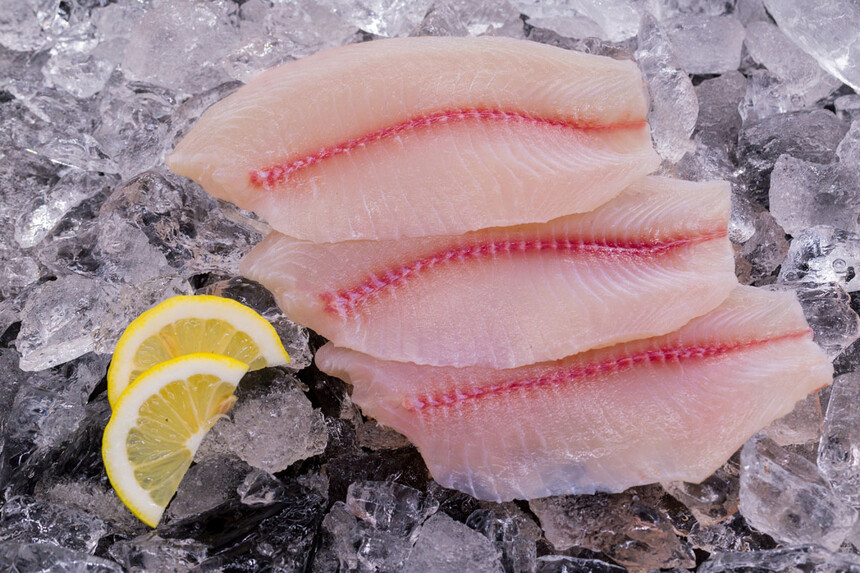|
China TilapiaChina's tilapia industry is facing severe challenges: stagnant exports make it hard to sustain price stability, and the ongoing tariff deadlock continues to dampen industry confidence! In the 28th week of 2025 (July 7th to 13th), the price of tilapia in southern China remained stable on the surface, but the tilapia industry warned that the tilapia market is facing continuing downward risks. Although the ex-factory price of tilapia in the 500-800g specification in the major producing areas of Guangdong and Hainan remained unchanged, behind the stable appearance lies the reality of a sharp drop in orders, stagnant exports, and low confidence.
This week, the tilapia raw material purchase prices of processing plants in Guangdong and Hainan remained at the level of last week, with no obvious fluctuations. However, voices from the front line indicate that the procurement rhythm behind this has slowed down significantly. A person in charge of a large export processing enterprise in Guangdong bluntly stated: "Stability is an illusion. The purchase volume is decreasing, and there is no improvement in export directions. After the U.S. tilapia orders ended, the entire chain seems to have broken a link." After the U.S. side announced a preliminary trade agreement with China in early June, it did not release further details and instead fell silent. Previously, the tilapia market once expected that a tariff adjustment node might come on July 9th, but things did not develop as expected. The current cumulative tariff on Chinese tilapia remains at 55%. Although this rate is lower than the earlier 179%, it still poses significant pressure on tilapia purchasers.
According to feedback from exporters, orders on the U.S. East Coast ended in June, and orders on the West Coast were all completed by July 5th. This caused the tilapia export rhythm, which should have been in the peak season in July, to stop suddenly. "Starting from July, we basically have no new orders of tilapia from the U.S. direction," a senior executive of a Hainan enterprise admitted. "Coupled with the overlapping of the high-temperature fish harvesting season, the supply volume is large, but the market has no ability to digest it."
The reaction of tilapia processing plants is obvious: reducing the purchase volume, arranging tilapia production cautiously, and pressing down tilapia prices to the purchasing end. Some enterprises have begun to turn to alternative markets such as Europe, the Middle East, and even Africa, but these markets have limited capacity and the tilapia prices are not as ideal as those in the United States. A Guangdong exporter said: "Although the U.S. has high tariffs, its volume is large. If there is no change for a long time, we must completely adjust our direction."
At the same time, the excess supply in the tilapia raw material market is also brewing greater pressure. It is just the peak breeding season in the south, and the adult tilapia fish stocked in the early stage have been listed in a concentrated manner. However, the absorption capacity of the downstream processing end is limited. Although the tilapia market price remains temporarily, it has shown signs of fatigue. Some industry insiders pointed out that "the current tilapia price stability is only a short-term balance. Once inventories accumulate or overseas markets continue to shrink, a price decline is inevitable." The overall demand for white meat fish in the U.S. domestic market is also weak. The latest data shows that the price of frozen tilapia fillets in the United States has generally declined. The price of 5-7 ounce water-containing products dropped to $3.20 to $3.40 per pound, a decrease of $0.10 from last week; the price of non-added products such as 7-9 ounce specifications also dropped to $3.60 to $3.80 per pound. The traditional summer consumption trough, coupled with the uncertainty of import commodity tax rates, has further reduced the purchasing willingness of U.S. buyers.
Against this background, the industry has begun to re-examine the market structure and development direction. Some enterprises have proposed that "we can consider strengthening the development of the domestic market, such as entering channels like school cafeterias and community restaurants." The local government of Maoming City, Guangdong Province, has already supported the inclusion of tilapia processed products in the student meal plan to stimulate domestic demand. As a healthy aquatic product recommended by the Food and Agriculture Organization of the United Nations, tilapia has the characteristics of low fat and high protein and has the potential for widespread promotion.
However, from the perspective of the entire industrial chain, exports remain an irreplaceable important pillar of the tilapia industry. At present, enterprises are generally in a wait-and-see state. On the one hand, they continue to maintain basic communication with U.S. customers; on the other hand, they are accelerating the development of new markets. But most enterprises admit: "Alternative markets cannot fill the gap in the U.S. market in the short term." lapia Blue Sea Fishery-China Tilapia Supplier, China Tilapia Fillets Supplier, China Tilapia Producer, China Tilapia manufacturer, China Tilapia seller, China Tilapia Exporter, China Tilapia Factory, China tilapia fillets producer, China tilapia fillets manufacturer, China seafood Supplier, China Seafood Exporter, Tilapia fish |



